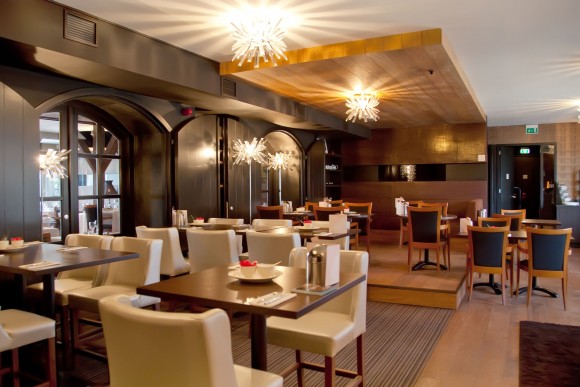Virtually every town in the United States has a restaurant or tavern, so your pursuit of these risks is fairly likely. Unfortunately, at times these types of risks are not the easiest to place.
Before you take that first step to place the risk, understand that restaurants and taverns have some unique exposures that must be addressed properly. Failure to do so could spell “heartburn,” otherwise known as an errors and omissions (E&O) claim, for your agency.
Variety of Risks
When discussing the restaurant/tavern class of business, there is a tremendous variety of and diversity to the exposures it presents. Thus, it is imperative to fully understand these potential exposures so you can effectively and accurately market the risk.
Oftentimes, with some risks within this class, the excess and surplus lines market may be your only choice. If so, be aware of limitations on the coverages offered.
A Great Source
To learn the ins and outs of this class of business, a great place to start is by accessing the information contained within exposure analysis checklists. These checklists provide solid information and insight, including a questionnaire detailing the pertinent questions to ask by line of business.
These questions include:
- Does the risk make deliveries?
- Do they provide valet service?
- What is the level of their security?
- Do they sponsor any athletic events?
Take some time to do your homework before you meet with the prospect. The time spent preparing for the call will help make the call more productive and help you understand the exposures more clearly.
Use Carriers Specializing in this Class
For more upscale/family-oriented risks, you will probably deal with the admitted marketplace. Because of the specialization of these risks, look to deal with a company that includes this as one of its specialties and has demonstrated solid expertise. There is a good chance that these carriers’ product offerings may be more comprehensive.
As mentioned, for some risks such as a tavern exposure or an account with poor characteristics or loss history, the excess and surplus lines market may be your only option. The coverage will likely be more basic without the same degree of bells and whistles.
Many E&O claims have focused on the lack of assault and battery coverage, often citing that the establishment owner was unaware this coverage was not provided.
Accurately Portray the Risk
As noted by the following claim, knowing the risk and accurately presenting it to the marketplace is of utmost importance. Less than total honesty can spell trouble.
For example, an agent had a restaurant as a client and had a property policy in place for this client. The carrier non-renewed the risk because of the customer’s loss history. The agent went to another carrier and uploaded an application into the system. The client was never asked to review or sign the application.
The carrier accepted the risk and, in the ensuing 12 months, paid $75,000 in claims and is now handling a $1.2 million loss for the restaurant. The carrier is alleging that a number of questions on the application were not answered correctly. The carrier states that had it known the true nature and history of the risk, it would not have insured the restaurant.
The application completed by the agency stated: 1. No prior losses (false); 2. Had not been non-renewed by another carrier (false); and 3. The risk cleaned the ducts and hoods above the stoves on a bi-annual basis (false).
It appears that the agency was negligent in its disclosure of the risk to the carrier.
Documentation is Key
There are a number of issues for these types of risks, including:
- Workers’ compensation;
- Assault and battery (Most E&S policies exclude this coverage.);
- Liquor liability (Does your risk realize its general liability policy does not provide this coverage?);
- Property (Attention to detail is extremely important, as evidenced by the above claim.)
It is best to visit the risk and meet with the client to complete the application. Require the client to review the application and sign it to attest to its accuracy. This alone could have made significant impact on the above claim. As with any risk, documentation is key.
Policy Checking
When you receive the policy from the carrier, check to make sure it reflects the requested coverages. Part of an agent’s defense in E&O litigation involves the client’s duty to read the policy. To reinforce this, when an agent sends the policy, he or she should include a cover letter advising the client to read the policy and contact the agency promptly if there are any questions, if the client doesn’t understand the policy or if any corrections are needed. If you personally deliver the policy, it is best to still include the letter and bring it to the client’s attention.
By taking the time to learn this industry and your clients’ exposures, your knowledge and expertise, coupled with the right market, can make insuring restaurants and taverns a rewarding undertaking. Without this, it could be your worst case of “heartburn.”
Topics Carriers
Was this article valuable?
Here are more articles you may enjoy.



 North Carolina Adjuster and Son Charged With Embezzlement in Roof Jobs
North Carolina Adjuster and Son Charged With Embezzlement in Roof Jobs  AIG General Insurance Chairman McElroy to Retire May 1
AIG General Insurance Chairman McElroy to Retire May 1  Dubai Floods Expose Weaknesses to a Rapidly Changing Climate
Dubai Floods Expose Weaknesses to a Rapidly Changing Climate  Allstate Reports $731M in Q1 Pretax Catastrophe Losses
Allstate Reports $731M in Q1 Pretax Catastrophe Losses 



